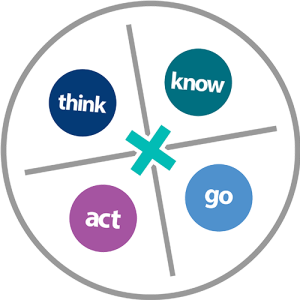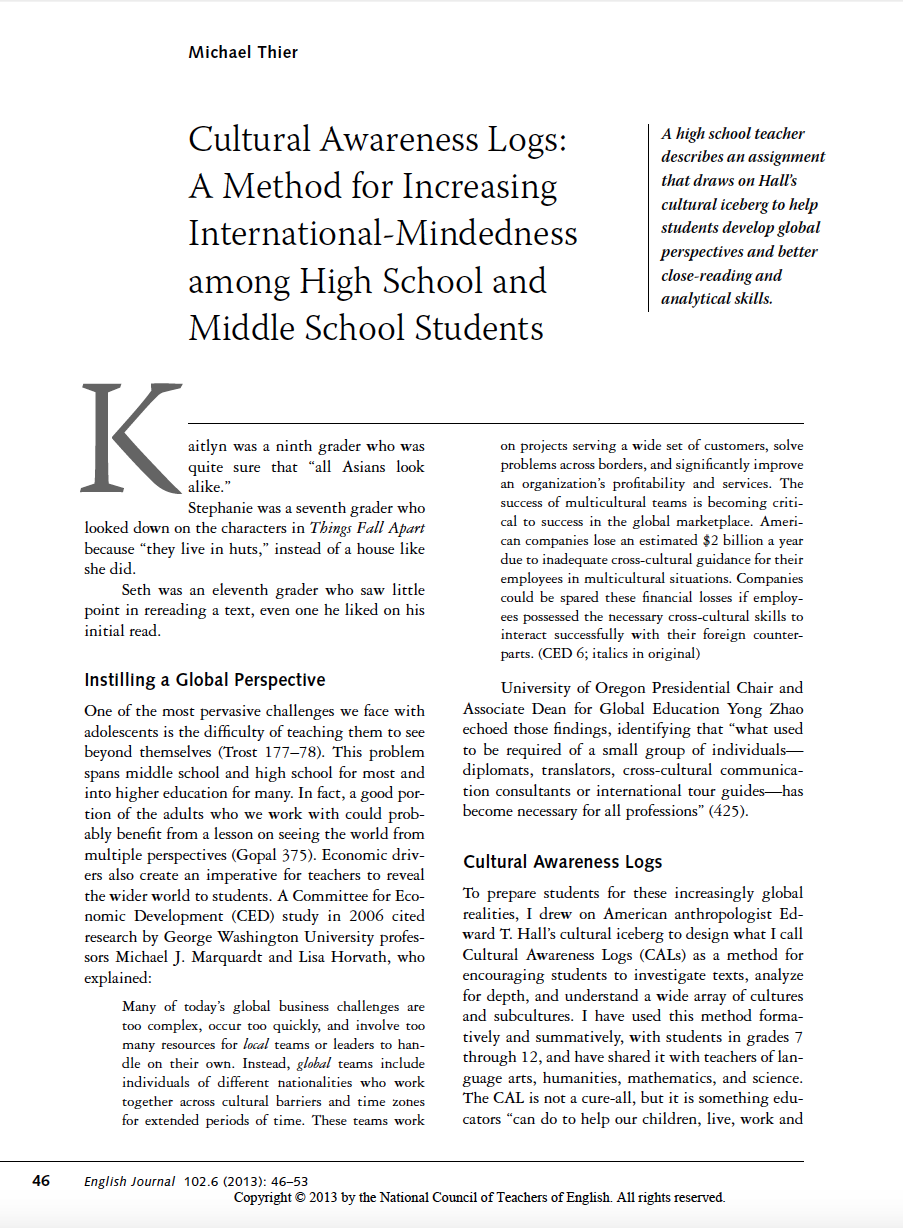One of the most pervasive challenges we face with adolescents is the difficulty of teaching them to see beyond themselves (Trost 177–78). This problem spans middle school and high school for most and into higher education for many. In fact, a good portion of the adults who we work with could probably benefit from a lesson on seeing the world from multiple perspectives (Gopal 375). Economic drivers also create an imperative for teachers to reveal the wider world to students.
Cultural Awareness Logs
To prepare students for these increasingly global realities, I drew on American anthropologist Edward T. Hall’s cultural iceberg to design what I call Cultural Awareness Logs (CALs) as a method for encouraging students to investigate texts, analyze for depth, and understand a wide array of cultures and subcultures.
I have used this method formatively and summatively, with students in grades 7 through 12, and have shared it with teachers of language arts, humanities, mathematics, and science. The CAL is not a cure-all, but it is something educators “can do to help our children, live, work and interact with people from different cultures and countries” (Zhao 425).
CALs target elements within texts, helping students find meaning and insights from cultural behaviors, beliefs, values, and thoughts of others. They show developing analytical readers how to investigate texts and cultures for key details, help developing researchers to categorize facts and begin citing sources formally, and teach developing thinkers to make strong, specific inferences about those texts and cultures. By allowing students to engage in-depth with a variety of cultures, they learn to go beneath the surface of a culture and identify key, meaningful similarities and differences between their cultures and those they are studying.
Cultural-Awareness-Logs-Thier-2013.pdf (1488 downloads )Authors: Michael Thier




